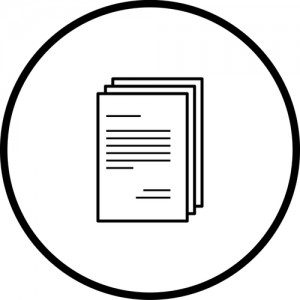In this post we will look at five easy tips that will make your podcast sound professional. In the age of information overload, it is simple for your audience to tune out or find another source. The best way to attract and keep an audience is to prepare a polished and professional sounding podcast.
1. Create a script/outline for your podcast
It is always clear when someone is unprepared to give a podcast. Don’t let your audience catch you stumbling through the climax of your story. Be prepared and write down a script or some notes ahead of time. Remember to speak slowly and to avoid crutch words, like “um,” “uh,” or “like.” These are distracting to a listener and lower your credibility. Even if you are conducting an interview, it is wise to send that person the questions ahead of time so that they can prepare responses.
Writing an audio script is different than writing for the screen or print documents, so check out some tips on effective writing for audio programs.
2. Maintain a Stable Volume Level
Have you ever listened to a podcast where the volume rises and falls dramatically. This can be troublesome for a listener. Ideally, your volume level should be uniform enough across the entirety of the podcast so that the listener never has to adjust the volume level. This could take a bit of editing, but it is certainly worth the time to create a polished end product.
3. Add Music
Creating musical transitions is an easy way to make your product seem more polished. Although you can use a certain amount of copyrighted music, usually about 15%, I would recommend finding some royalty free music. Adding music also allows you to dictate the feel and tempo of your piece. This goes a long way to creating a professional piece.
Incompetech provides some good royalty-free music, and YouTube has also started offering royalty-free music to its users.
4. Create Unified Sections
When planning your podcast, think about how your audience will experience the piece as a whole. Typically, to create unity, people divide works of art into threes or fives. Think about the three and five-act plays, or the idea of a unified trilogy. For shorter segments, think about breaking your content into three sections: introduction, body, conclusion. For longer segments, break your content up into five different sections: introduction, exposition, climax, resolution, conclusion.

Humans like to break things into groups of odd numbers. Think about the popularity of movies and books written in three, five and seven parts.
5. Humanize Your Subject
The best podcasts give a uniquely human perspective to each subject you document. Don’t ignore this aspect of the podcast. What makes your information different or more engaging than the nightly news. Do you conduct interviews with field experts, or find compelling human examples to illustrate your ideas? The human experience is what will motivate people to tune in and keep listening.



